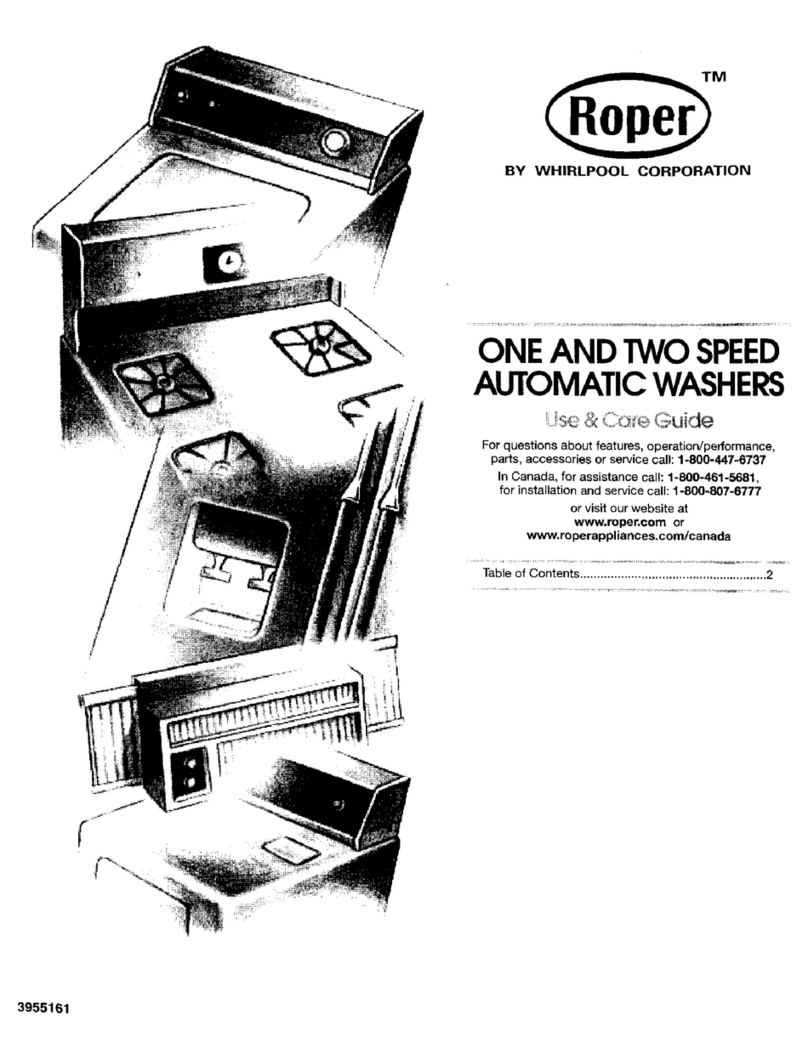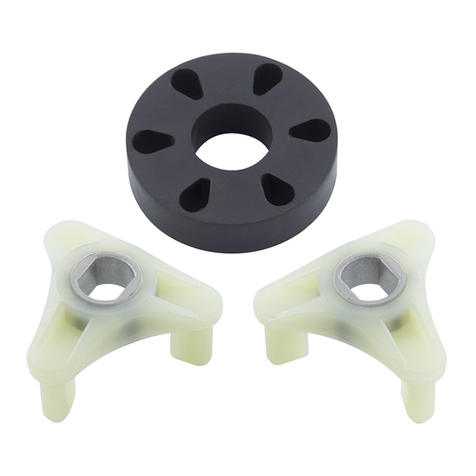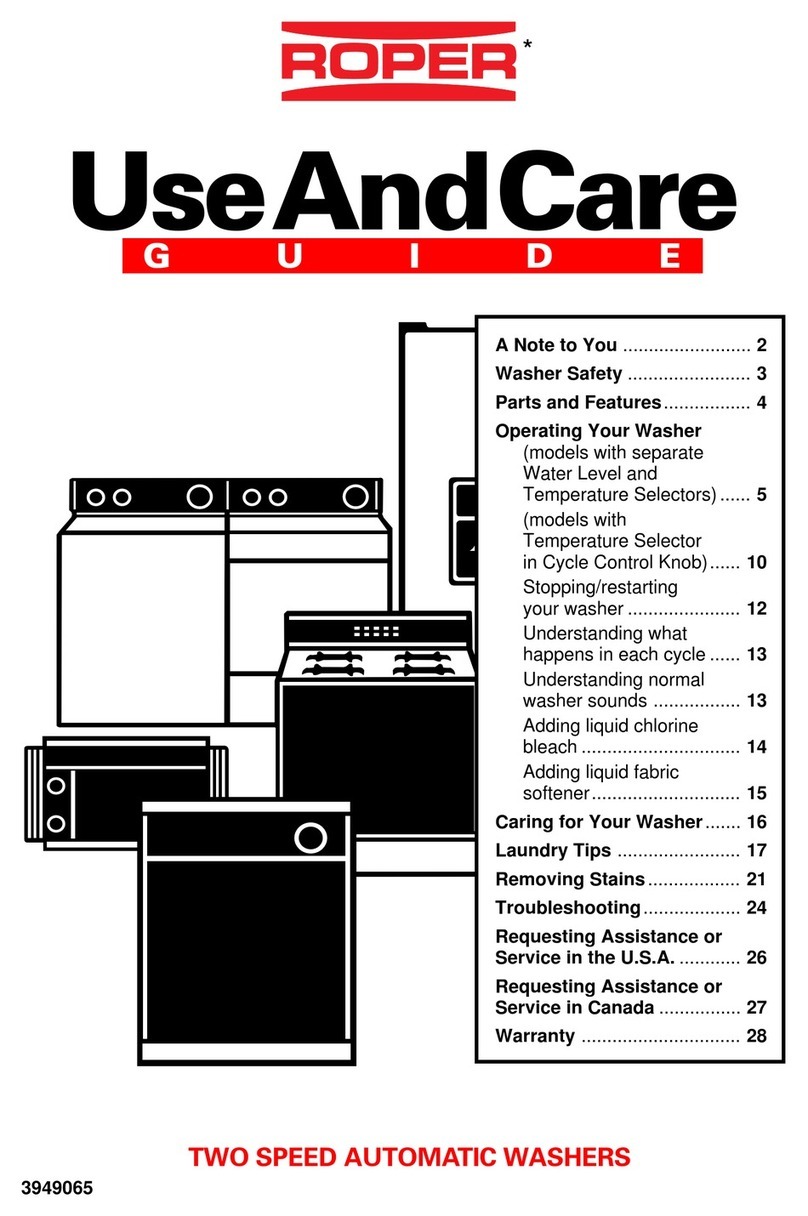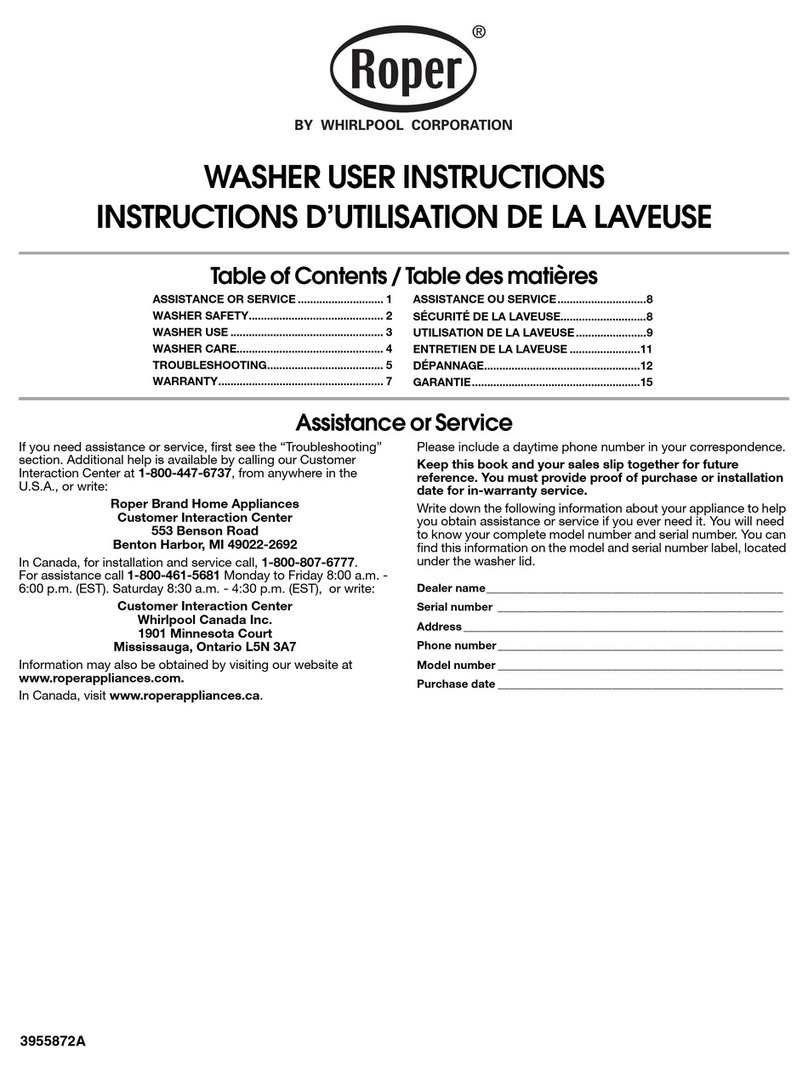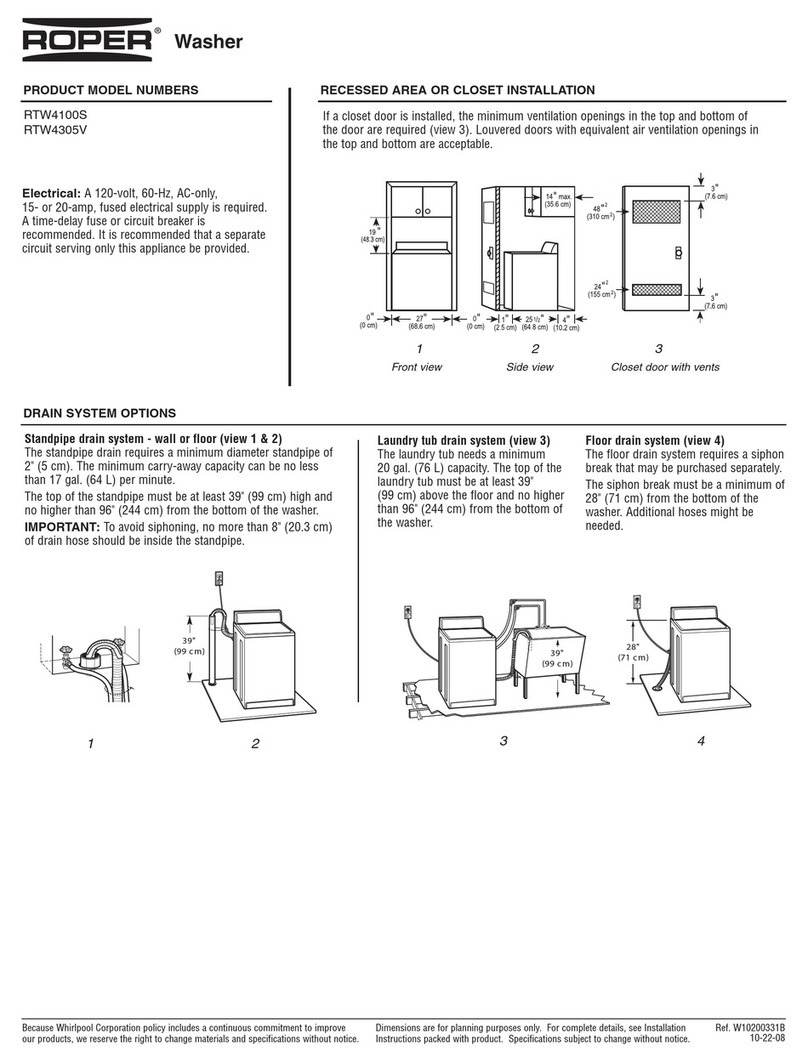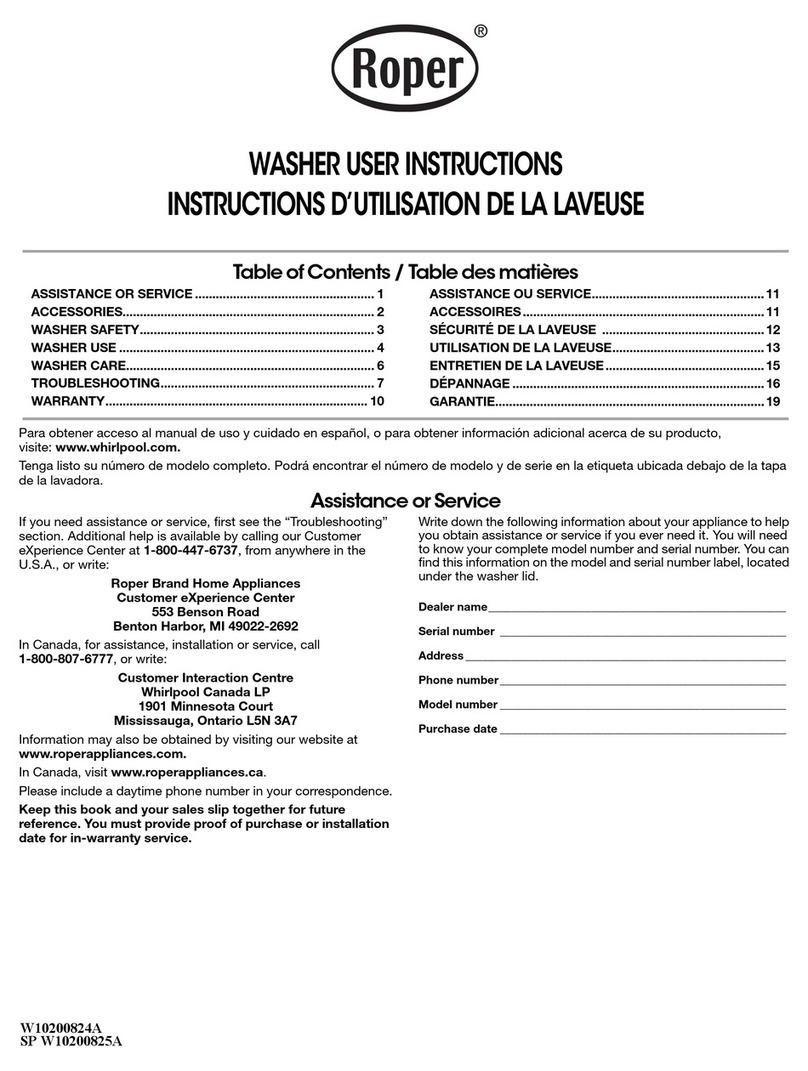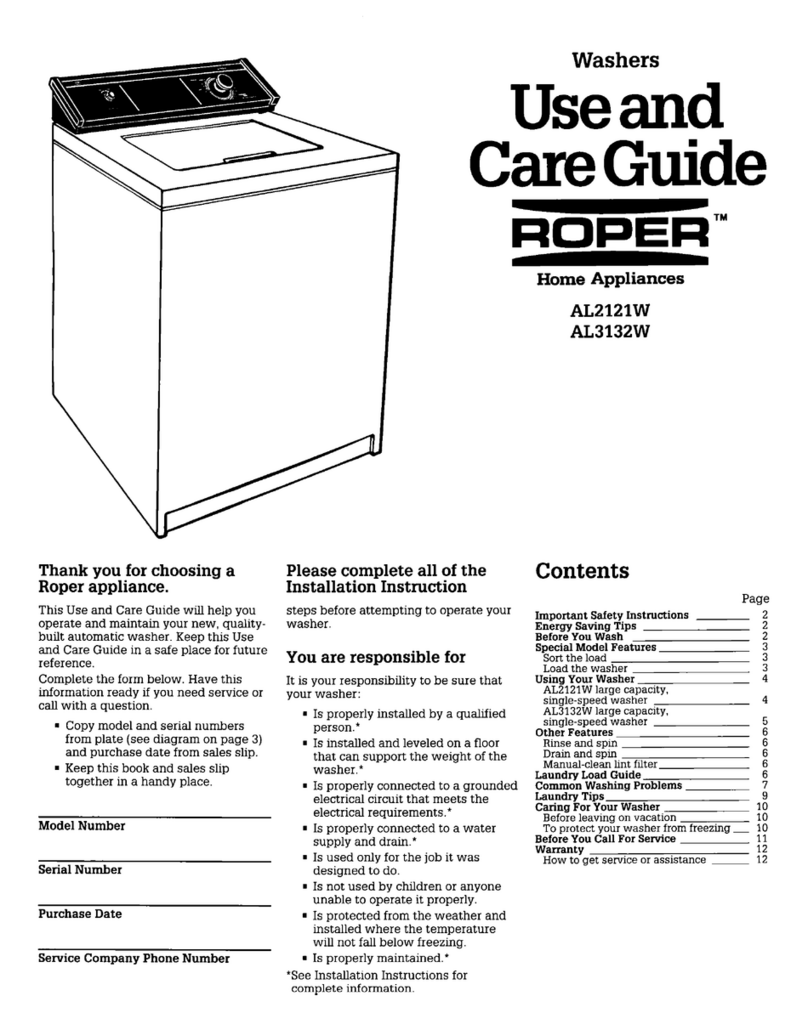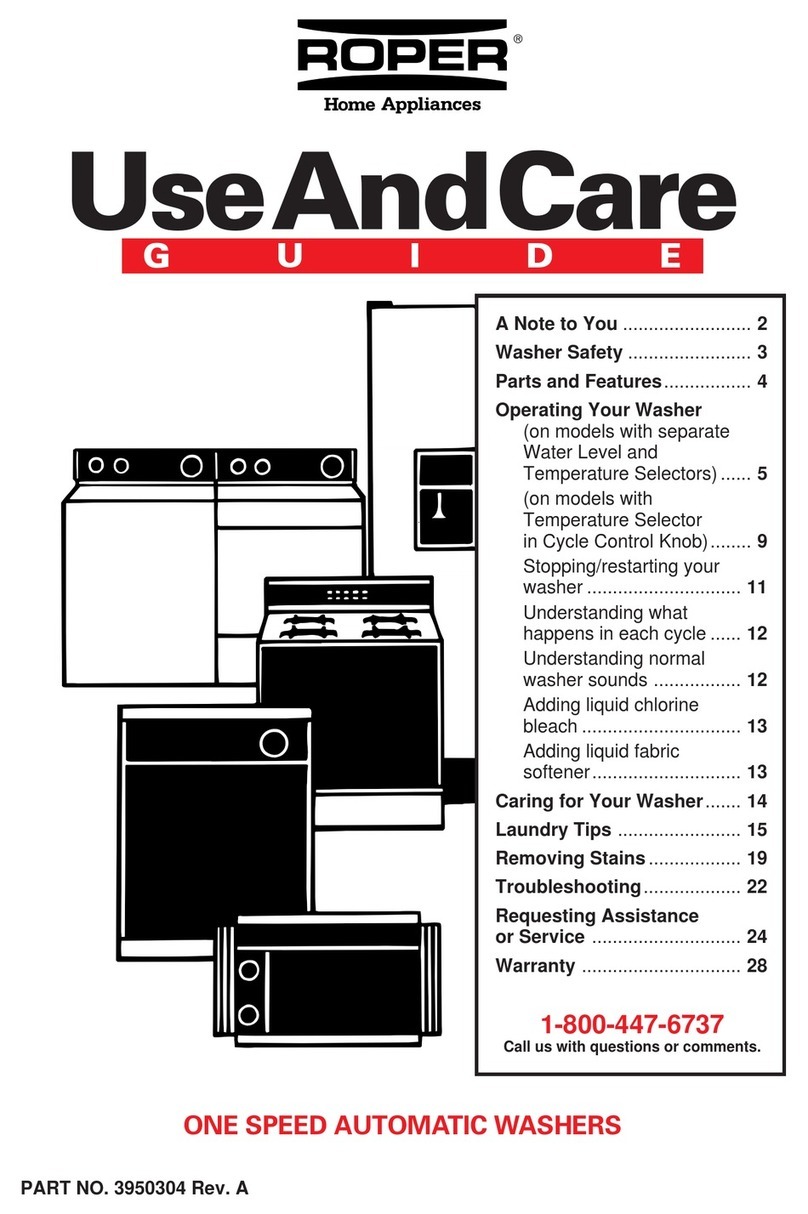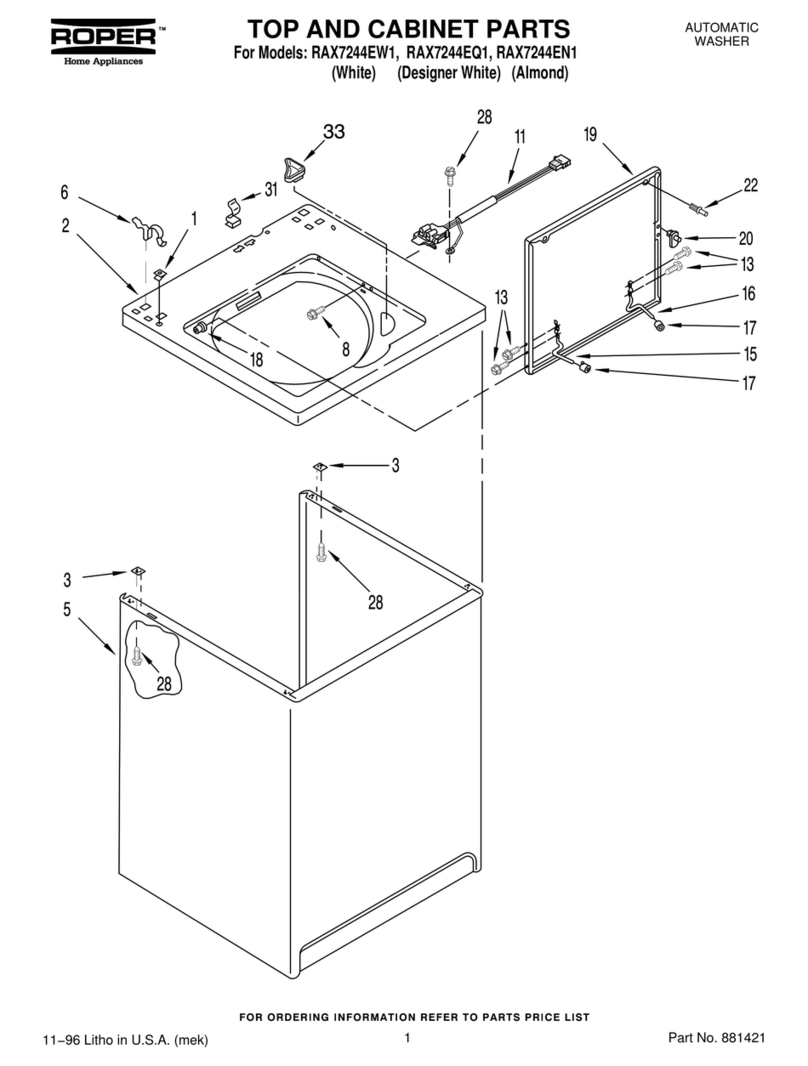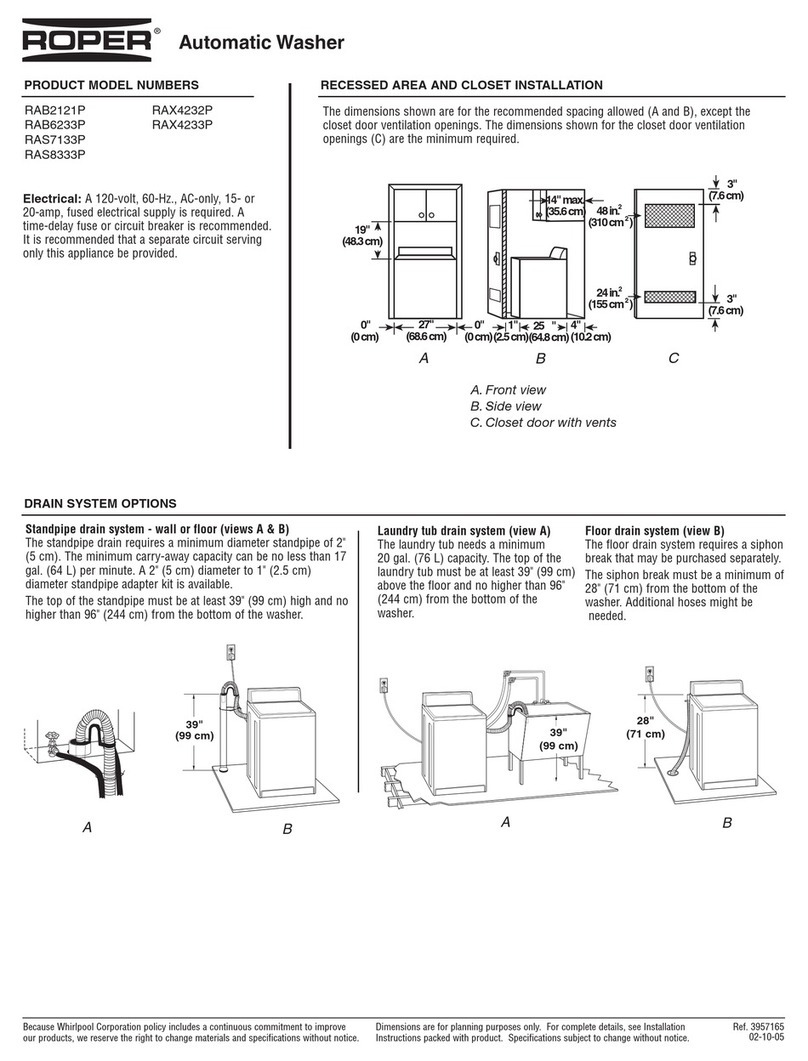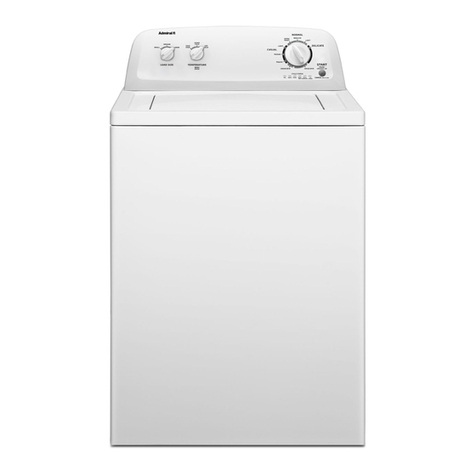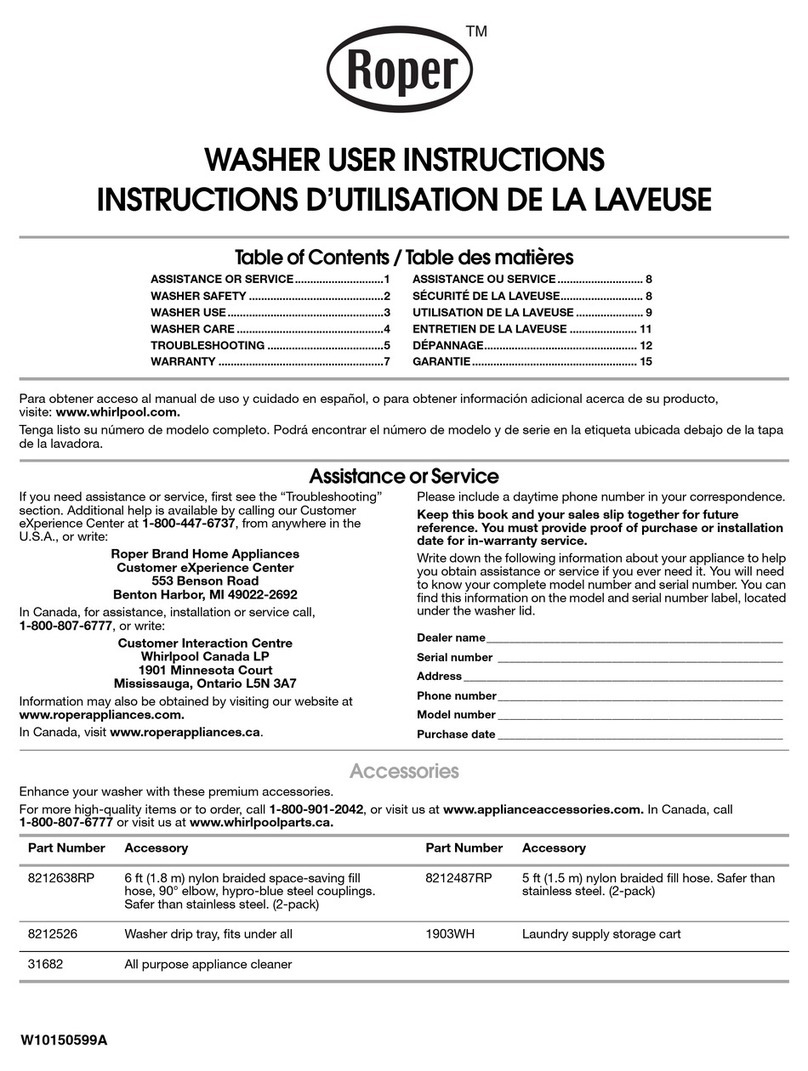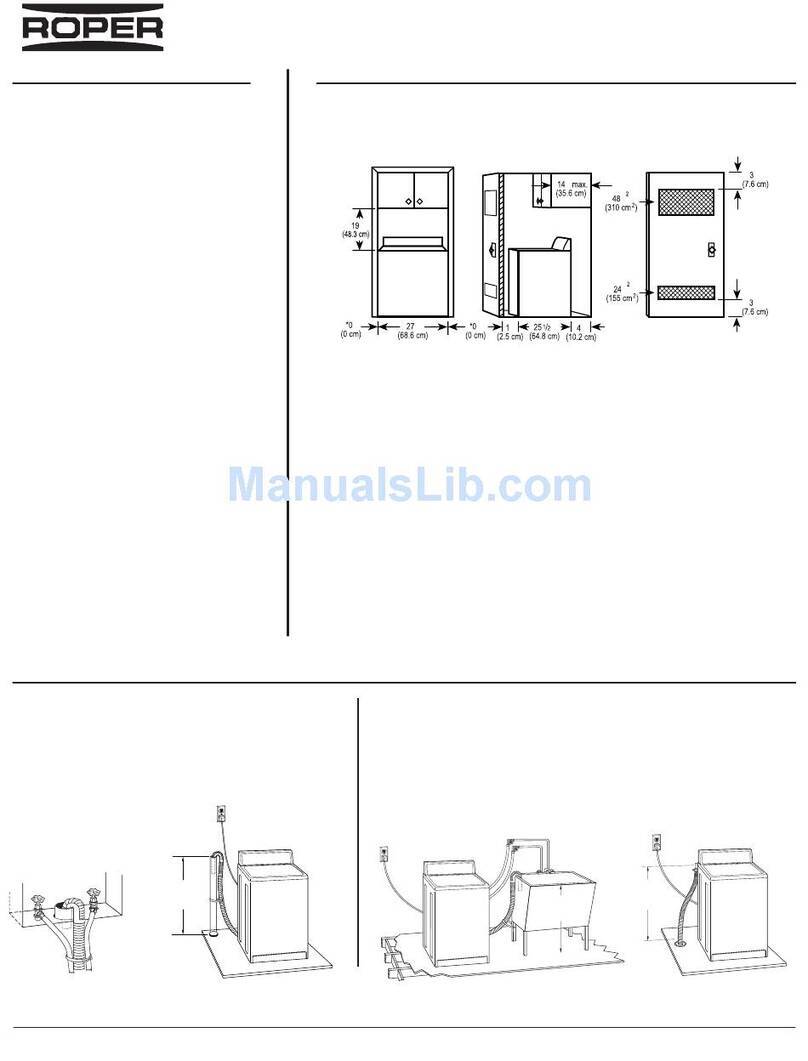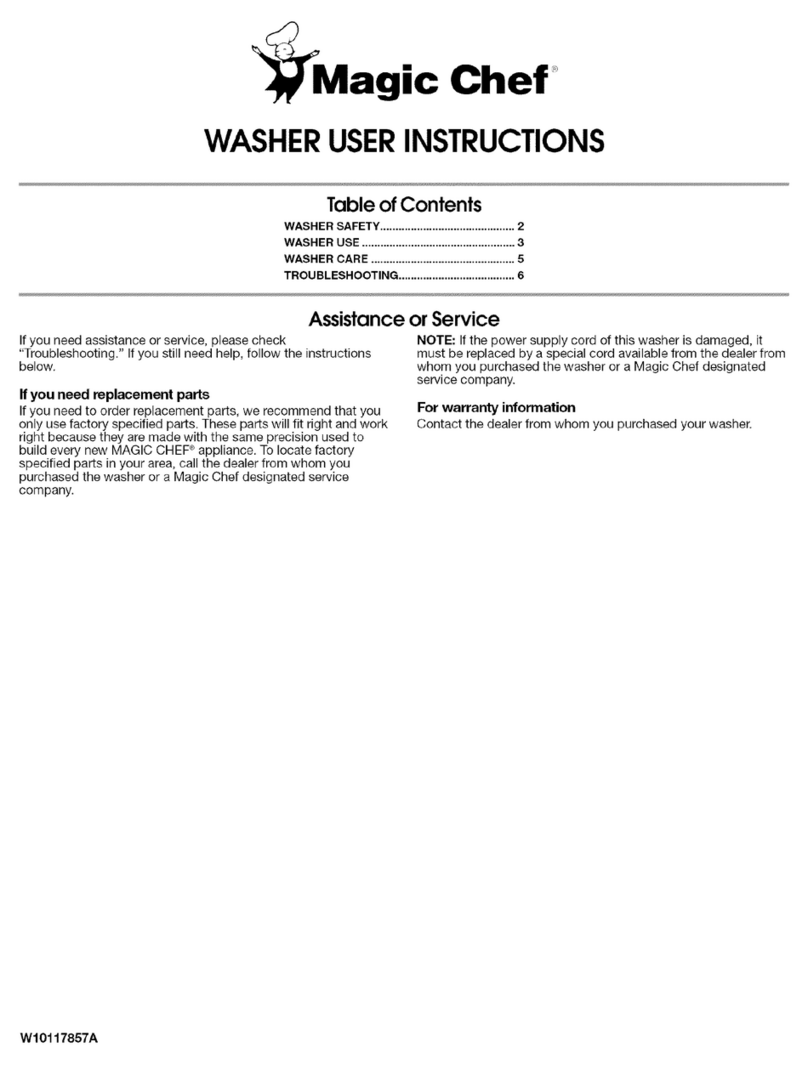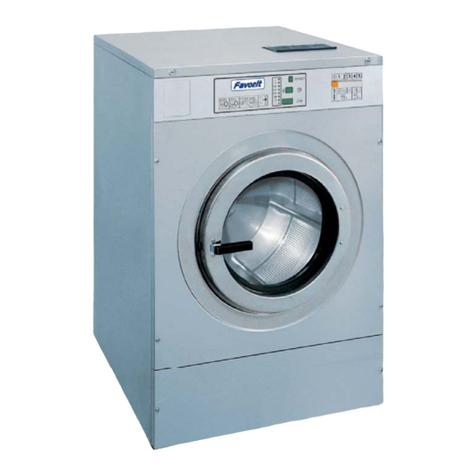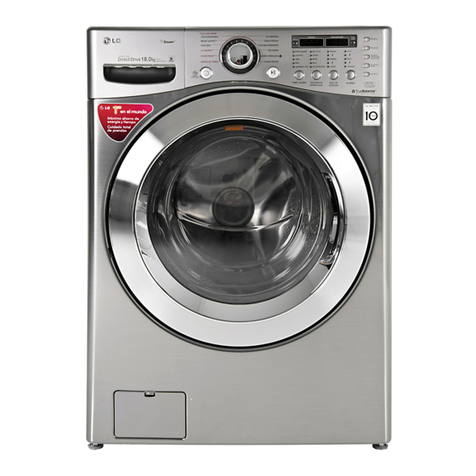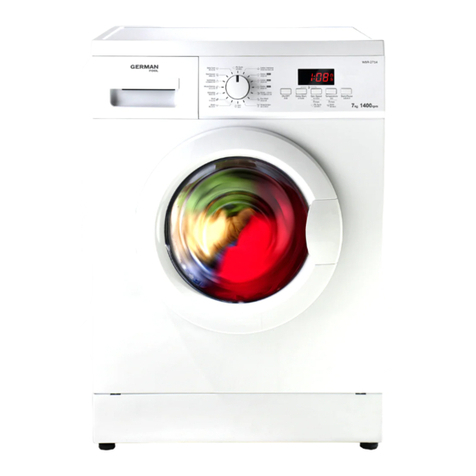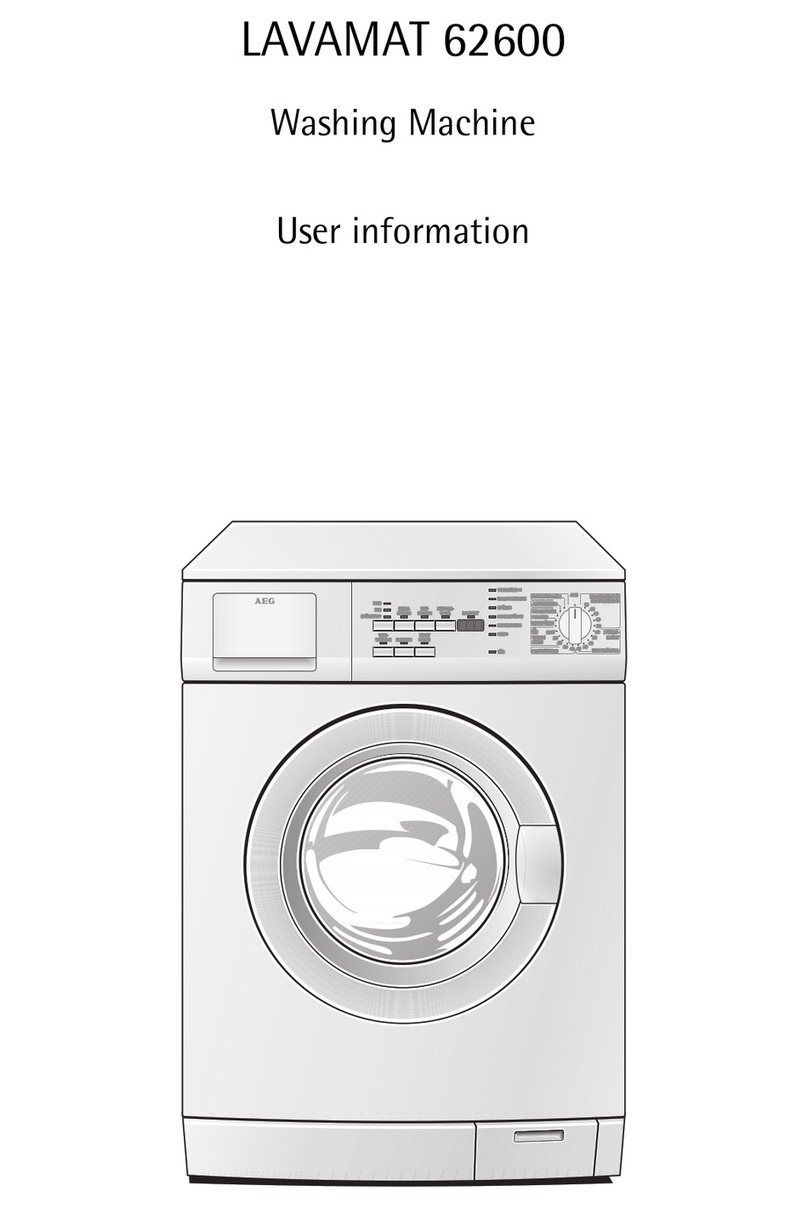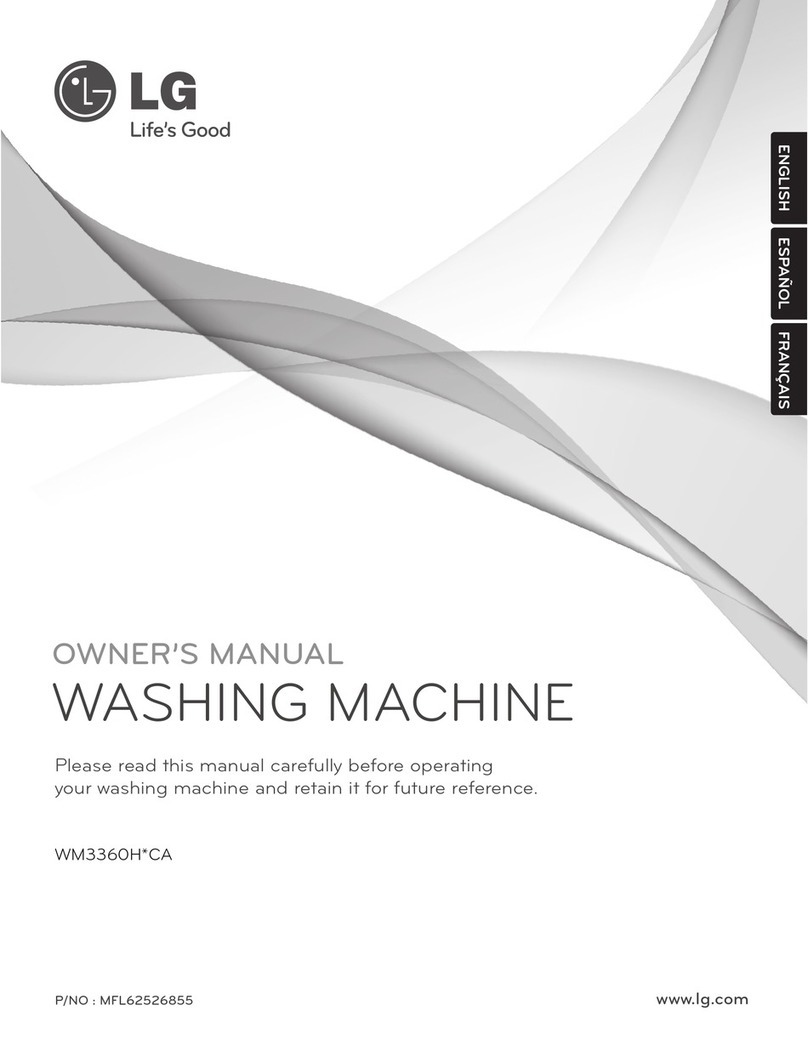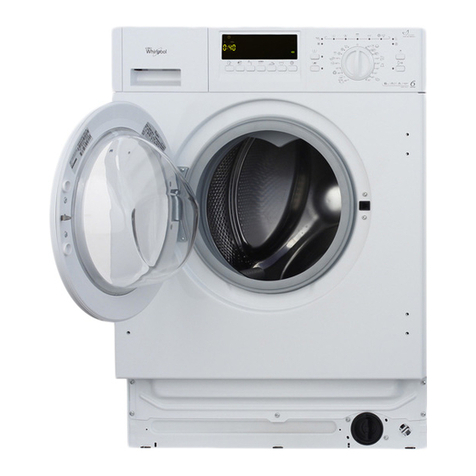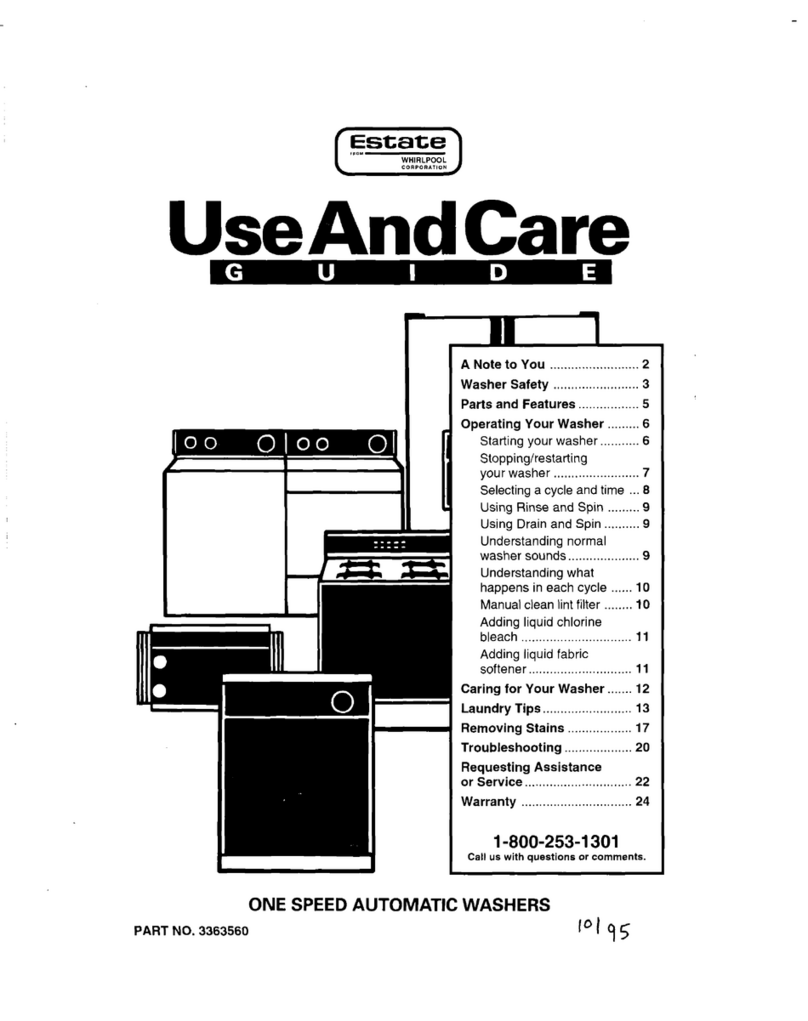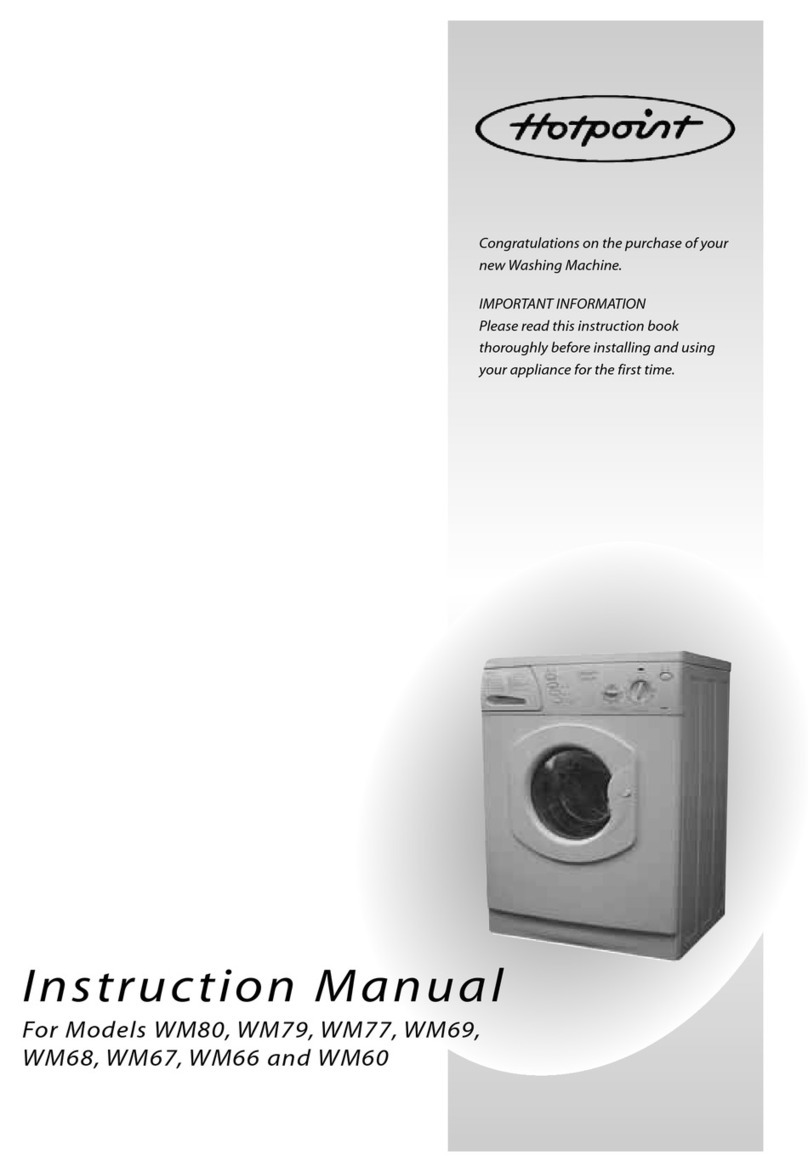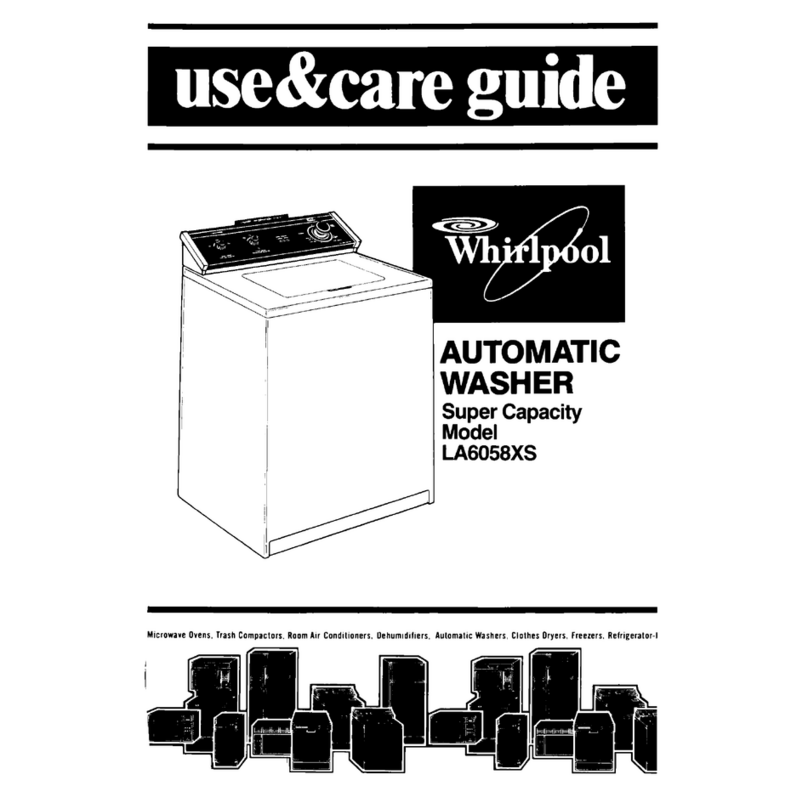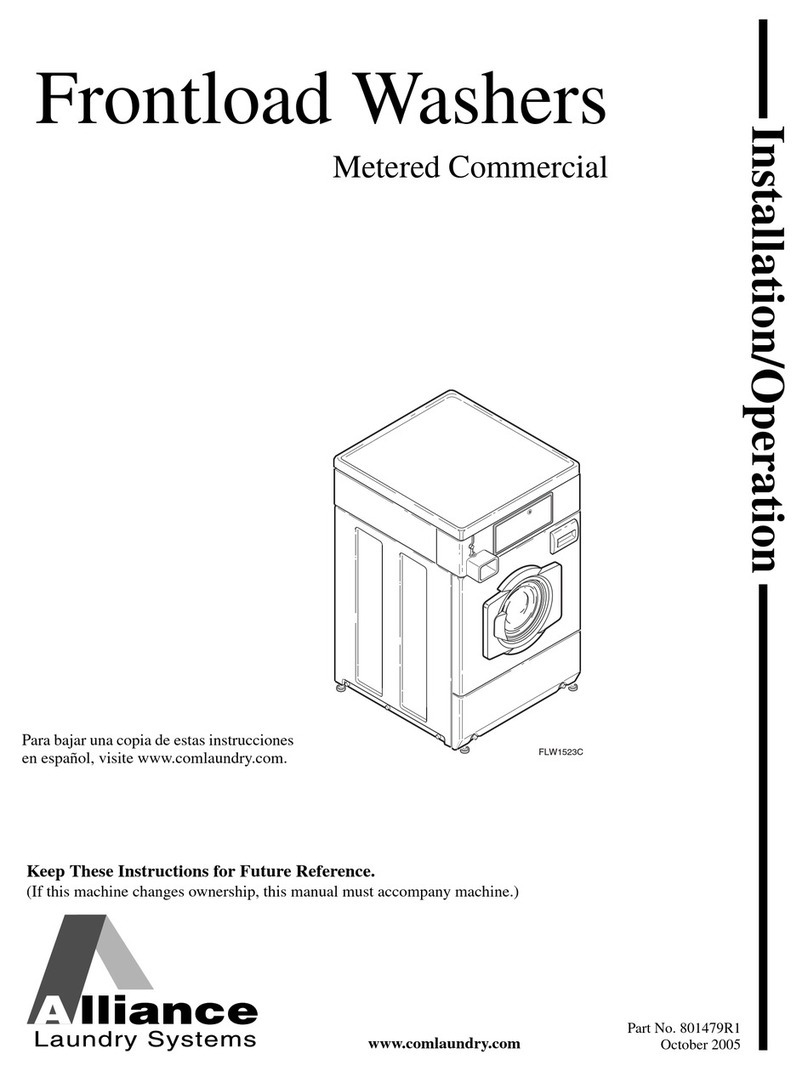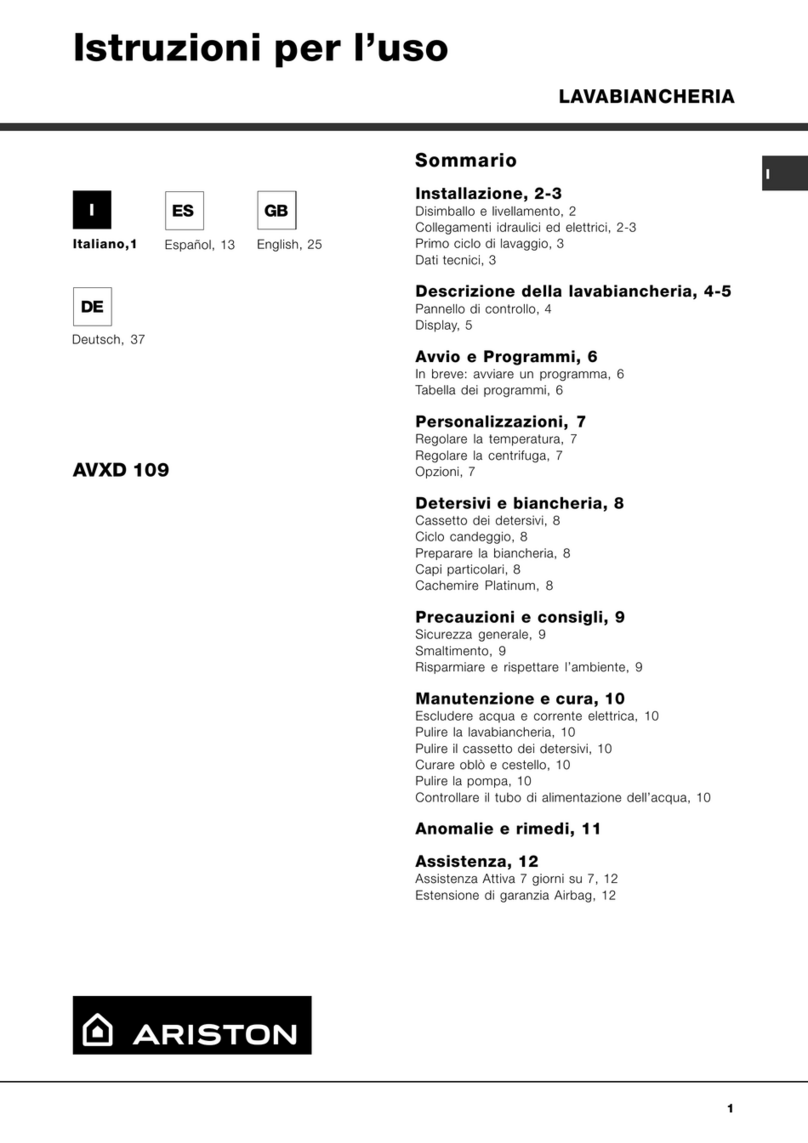3
Washer Safety
This symbol alerts you to
hazards such as fire,
electrical shock, or
other injuries.
IMPORTANT SAFETY INSTRUCTIONS
WARNING – To reduce the risk of fire, electric shock, or injury to persons
when using the washer, follow basic precautions, including the following:
•Read all instructions before
using the washer.
•Do not wash articles that have
been previously cleaned in,
washed in, soaked in, or spotted
with gasoline, dry-cleaning
solvents, other flammable, or
explosive substances as they
give off vapors that could ignite
or explode.
•Do not add gasoline, dry-clean-
ing solvents, or other flammable,
or explosive substances to the
wash water. These substances
give off vapors that could ignite
or explode.
•Under certain conditions, hydro-
gen gas may be produced in a
hot water system that has not
been used for 2 weeks or more.
HYDROGEN GAS IS EXPLO-
SIVE. If the hot water system
has not been used for such a
period, before using the washing
machine, turn on all hot water
faucets and let the water flow
from each for several minutes.
– SAVE THESE INSTRUCTIONS –
This will release any accumulated
hydrogen gas. As the gas is flam-
mable, do not smoke or use an
open flame during this time.
•Do not allow children to play on or
in the washer. Close supervision
of children is necessary when the
washer is used near children.
•Before the washer is removed
from service or discarded, remove
the door.
•Do not reach into the washer if
the tub or agitator is moving.
•Do not install or store the washer
where it will be exposed to the
weather.
•Do not tamper with controls.
•Do not repair or replace any part
of the washer or attempt any
servicing unless specifically rec-
ommended in this Use and Care
Guide or in published user-repair
instructions that you understand
and have the skills to carry out.
•See Installation Instructions for
grounding requirements.
Your safety is important to us.
This guide contains safety symbols and
statements. Please pay special attention to
these symbols and follow any instructions
given. Here is a brief explanation of the use
of the symbol.




















